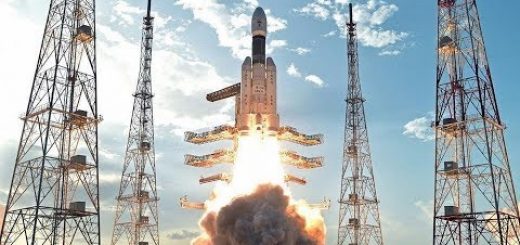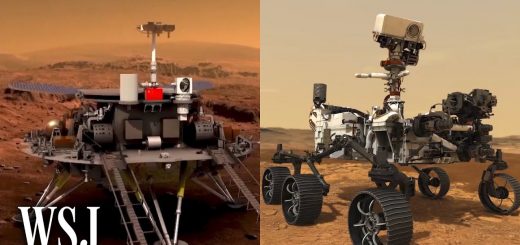Why NASA Mustn’t Land Near the Moon’s Poles Yet
Thanks to Henson Shaving for sponsoring today’s video. The Moon has always had a pull for us on Earth, both metaphorically and quite literally. Night after night, it is the largest object we see in our sky. It affects our tides, and sometimes even our emotions, giving rise to both legends of terrifying werewolves, and providing the backdrop for heart-warming romance. But beyond its literary significance, it is widely recognised by most space agencies that the Moon is the first stepping stone on humanity’s way to colonising the solar system. By developing colonies on our closest neighbour, scientists prepare themselves for some of the challenges that will be faced on further away missions like Mars. However, the last time people have walked on the surface of the Moon was back in 1972 with the Apollo 17 mission, and while the Moon is rich with opportunity, there are dangers there that we did not encounter during our first, all too brief foray. On its silent surface, hidden menaces lurk, imperceptible to the naked eye. I’m Alex McColgan, and you’re watching Astrum, and in this video, we’ll explore some of the new dangers astronauts will encounter on the Moon, as well as explore some of the interesting solutions for how these challenges might be overcome. In the last couple of decades, lunar programs have recognised the Moon to be full of resources that could be incredibly useful in building our first extraplanetary colonies. There are Rare Earth Metals (REM), helium-3, and probably most important of all, water ice. Water ice was first detected in 1998 when NASA’s probe Lunar Prospector was surveying the polar regions, and thought it spotted ice in some craters there. After this discovery, NASA voluntarily crashed their Lunar Prospector into one such crater in the hopes of releasing a cloud of water vapour which could then be detected using our telescopes. Ten years later, India’s Chandrayaan 1 spacecraft, launched in 2008, also managed to detect water ice in the Moon’s north pole, further confirming the existence of this lunar treasure. Nowadays, a staggering 600 billion kg of water ice is estimated to be on our Moon, roughly the same weight as 461,538,462 cars. That’s a lot of water. But how could such water be found on the Moon, particularly as ice? Wouldn’t it have evaporated out into space, particularly under the hot daytime temperatures? NASA’s Lunar Reconnaissance mission recorded surface temperatures as high as 127 degrees Celsius on parts of the Moon in direct sunlight. However, the key is in that phrase – “direct sunlight.” In the shadowed portion of the Moon, temperatures can go as low as minus 240 degrees Celsius, which is more than cold enough to keep water frozen. These wildly fluctuating temperatures might still be a problem for water ice if it wasn’t for an interesting feature of the Moon’s rotation. The Moon has a low inclination to the plane of the ecliptic of the Earth around the Sun, with an inclination angle of five degrees. It is believed that billions of years ago many comets containing water impacted on the Moon’s surface allowing craters and depressions in the polar regions to aggregate water. Because of the Moon’s low inclination some of these craters never saw sunlight for millions of years, allowing this aggregated water to freeze and remain untouched by sunlight. When the Lunar Reconnaissance recorded temperatures in some of these permanently darkened polar craters, they were as low as minus 238 degrees Celsius at the Moon’s south pole and a staggering minus 247 degrees Celsius in one of the northern pole’s craters. If we intend to colonise the Moon, utilising this water will be incredibly important. If we could collect this water ice, we could use it to produce oxygen and liquid water, or even make fuel. However, collecting this water ice might be more challenging than you’d think. And I don’t just mean the cold. There are bigger problems we’d have to face if we want to collect and use water ice and other resources from the poles – one of them is electricity. Because of the Moon’s low inclination, solar winds – mainly made of ions and electrons – pass by the polar regions and the terminator almost horizontally, hitting the craters’ leeward. Once there, the negatively charged electrons, which are 1,000 times lighter than the positively charged ions, rush down into the craters’ inside walls and bottom causing these surfaces to become negatively charged. As the electrons rush down before the ions, a difference in charge is formed, causing an electric field to form. A negative charge is created at the bottom and inside walls of the craters, while a positive charge forms above until the positively charged ions are driven into this electric field by the electrons. As you can imagine, the most prominent separation between the two occurs at the craters’ leeward where the solar wind hits. This division between electrons and ions will eventually reach a critical level. Because of this effect, these areas could be charged up to hundreds of thousands of volts, which could have deadly consequences for an unwary explorer. But even if you avoid the poles, that might not be the end of the electrical problems you could encounter on the Moon. Another occurs when combined with the fine surface dust of the Moon – regolith. The Moon has no magnetosphere, so any incoming solar winds directly hits its surface, causing the surface to become negatively charged and the covering fine dust on the Moon, regolith, becomes electrostatic. Regolith is a fine dust with sharp edges which can have abrasive effects. In fact, during the Apollo missions, it was reported that regolith would stick to everything due to its electrostatic charge. This could potentially damage spacesuits and instruments, which would be a huge problem. On top of that, regolith also causes some negative effects on health causing eye redness and cough as it can be highly toxic. Spacesuits in the Apollo missions were made of a material called woven Teflon which attracted the electrostatic regolith and trapped it into its material. Woven Teflon can also cause a tribo-electric effect making the astronauts a medium between the negatively charged ground of the Moon and the positively charged solar wind flowing above their head. This is similar to what happens when you rub your feet on a carpet and then touch the metal handle of a door, causing you to get a small electric shock. A laboratory experiment has even proved that woven Teflon covered in a simulant regolith was more prone to electric arcing. Lunar exploration would be much less appealing if you were constantly getting electrically shocked. So, if the dust and the woven Teflon made the astronauts so susceptible to getting electrocuted, why haven’t we noticed before? Wouldn’t it have happened during the Apollo missions? Well, this static effect can be offset when photons emitted from the Sun kick off some of the electrons from the ground in a process known as photoelectric emission. This causes the ground in direct sunlight to be more positively charged and balance the negative charges brought by the solar wind. Because landers of the Apollo missions landed on a part of the Moon which was constantly hit by sunlight, our astronauts had very low chances of getting electrocuted. But that’s not to say it wouldn’t be an issue elsewhere. So, how can we keep our astronauts safe from extreme temperatures, toxic dust that could potentially contaminate moon bases, and the high chances of astronauts getting electrocuted by up to hundreds of thousands of volts of electricity? To avoid that we would need to design a new spacesuit with dissipative properties that would never allow potentially dangerous electric discharges to damage them, or cause harm to the astronauts wearing them. You might think a good insulating material is rubber, and you would be right, but this would have to be balanced against the extreme temperature fluctuations these suits might have to face. After all, what would happen to rubber in an environment where temperatures could potentially reach minus 247 degrees Celsius? There are multiple undergoing projects though that are working on finding a solution to these and other problems, but so far nothing definitive has come of it yet. To avoid regolith, a team at the Washington State University was granted $130,000 by NASA on a project involving liquid nitrogen, which has properties that allow it to capture dust, like regolith, from surfaces, allowing lunar bases to be kept cleaner and avoid risks of getting it contaminated. NASA is also working on a technology involving Electrodynamic Dust Shields, consisting of electrically charged panels which, through wires, shoot currents able to wipe away the regolith from surfaces. A pretty cool way of cleaning! There is also a revolutionary new technology being developed by NTENTION, a Norwegian tech company, which is working on a project called ASG. This technology could potentially enable remote human explorations and missions by using a human-machine interface (HMI) which allows people to control rovers, robotic arms, or even machineries with the swing of one hand. They are working on including this technology in spacesuits which could have fascinating implications for future missions to the Moon, and even Mars. This would allow astronauts to stay safe inside bases while the machines are doing the job on the field. China, in collaboration with Russia and other countries, is planning to send three missions by 2029 called Chang’e 6, 7, and 8 which will be targeting the south pole where they plan to establish by 2030 a robotic station. The US also plans to have a lunar base by 2030 on the lunar south pole with NASA’s Artemis program. They plan on launching their first non-manned flight test Artemis 1, followed by a crewed flight test, Artemis 2, and finally launch Artemis 3, which will happen no earlier than 2025 and that may be our first manned mission to the Moon since 1972. So, although there are still many challenges to establishing bases on the moon, returning there within our lifetimes is becoming increasingly realistic. Any environment in space is dangerous, and the Moon is no exception. But as scientists continue to recognise and overcome these challenges, humanity will be able to take its first steps off our home planet. And once we have mastered the Moon, the wider solar system awaits… with all its exciting planets and moons! The incredible thing about humans is the ability to innovate. We’ve just had plenty of examples of trying to solve real-world space-faring problems, but we may have just seen a massive leap forward in innovation from today’s sponsor, Henson Shaving. Razors have not changed much over the years, but that’s not to say they were already perfect. In fact, there was some serious room for improvement, which I found out when I used a razor from Henson Shaving. Henson’s razors are made to incredibly tight tolerances, meaning the razor fully supports the blade, eliminating vibrations that can cause pulling. And the cost of using the razor is far cheaper in the long run. Other companies keep you locked in by selling expensive blades, Henson uses 10c disposable blades. I also love how easy it is to wash and maintain. So not only is it a better product, it’s far cheaper and reduces plastic waste. Try it for yourself, click the link in the description and use the code ‘ASTRUM’ at checkout and you’ll get 100 blades for free along with your purchase. Thanks for watching! A big thanks to my patreons and members for supporting the channel, and if you want to support check the links in the descriptions below. All best, and see you next time.













